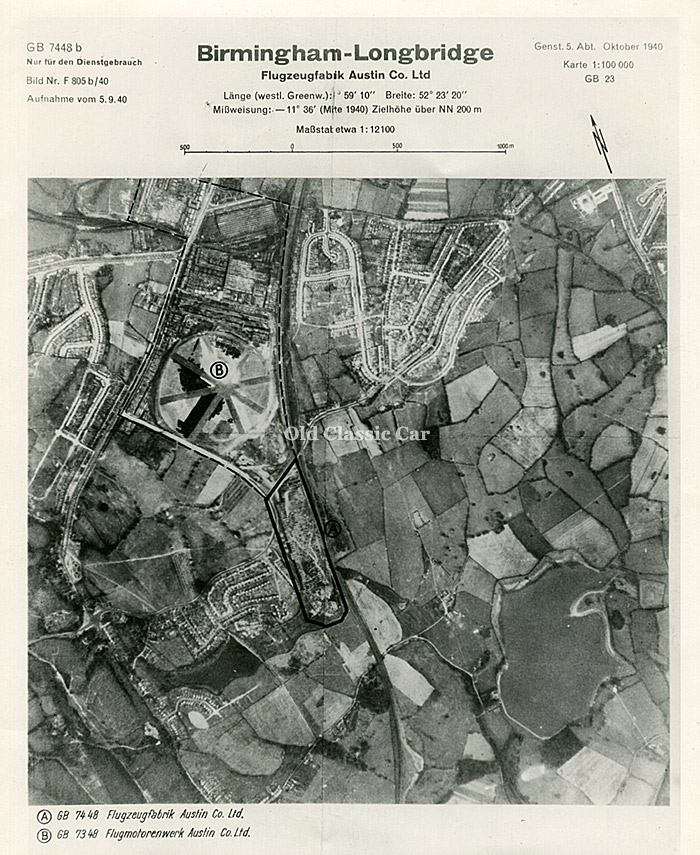Austin Motor Company aerial photograph, Longbridge, 1940, taken by Luftwaffe reconnaissance aircraft.
Sometimes the strangest things turn up in car boot sales, this WW2-era photograph being a perfect example. The subject is the Austin Motor Company's works at Longbridge, Birmingham, in 1940. It was taken by a German Luftwaffe reconnaissance aircraft in September of that year, as part of a fact-gathering mission used to identify targets critical to the British war effort.
|
|
I'm unsure as to the date of this print. It certainly has age to it - the musty smell of the photographic paper is a giveaway, as is the light yellowy staining around the edges of the print, visible from the rear, but whether it dates to 1940 or a little later I can't be 100% sure, although I suspect a slightly later date is the most likely answer. The original photograph was taken on the 5th September 1940, a mere two days after Hitler decided to postpone a German invasion of Britain. From this point onwards he'd focus on the destruction of London, switching the Luftwaffe's attentions away from RAF airfields and, fortunately for us, giving the RAF and aircraft manufacturers a little breathing space to re-group and build up available numbers of fighters and bombers, after a sustained period of losses.
|

|
The Shadow Factory at Longbridge.
Production of cars at the Longbridge Works dwindled as efforts instead turned to the production of equipment to support the war effort, at a time when a great deal of production was spread across Shadow Factories across the country The Shadow Scheme was a plan headed up by Austin's founder Herbert Austin, working alongside the Air Ministry, in the 1930s as the prospect of war loomed ever greater. The dispersal of aircraft, engine and armament build across multiple facilities spread the risk of supply shortages, should particular key targets be destroyed by enemy bombing raids. New factories, as well as the re-deployment of car factories, both formed part of the overall planning. Examples of motor manufacturing plants being used in this way included Banner Lane, Coventry (Standard Motor Company, producing Bristol Hercules aero engines), Trafford Park in Manchester (Ford, building Rolls-Royce Merlin engines), and Cofton Hackett, East Works, Longbridge (Austin Motor Company, Bristol aero engines plus production of the Hawker Hurricane fighter, and Fairey Battle, Shorts Stirling, Avro Lancaster, and Wellington bombers. It is the latter facilities at Longbridge that the above photograph specifically relates to.
|
|
Two particular areas of interest are marked on this aerial photograph, marked A and B. "A" is the "Flugzeugfabrik Austin Co. Ltd" (Austin aircraft factory), while "B" is the "Flugmotorenwerk Austin Co. Ltd." (Austin aero engines facility). A zoomed-in look at both locations can be seen in these separate scans: A and B. The reason for the German interest in Longbridge needs little further explanation, given that the location was instrumental in not only aircraft engine production, but also the build of the RAF's key bomber fleet. Armaments for tanks, plus naval mines, depth charges, steel boxes and helmets were also produced at Longbridge.
|
|
An overhead view of the same area today, just north of the M42 motorway, can be found in the following Google Images photograph.
|

|
|
Longbridge today.
|
|
More items of paperwork relating to motoring can be found in the Motoring Collectables section.
|






